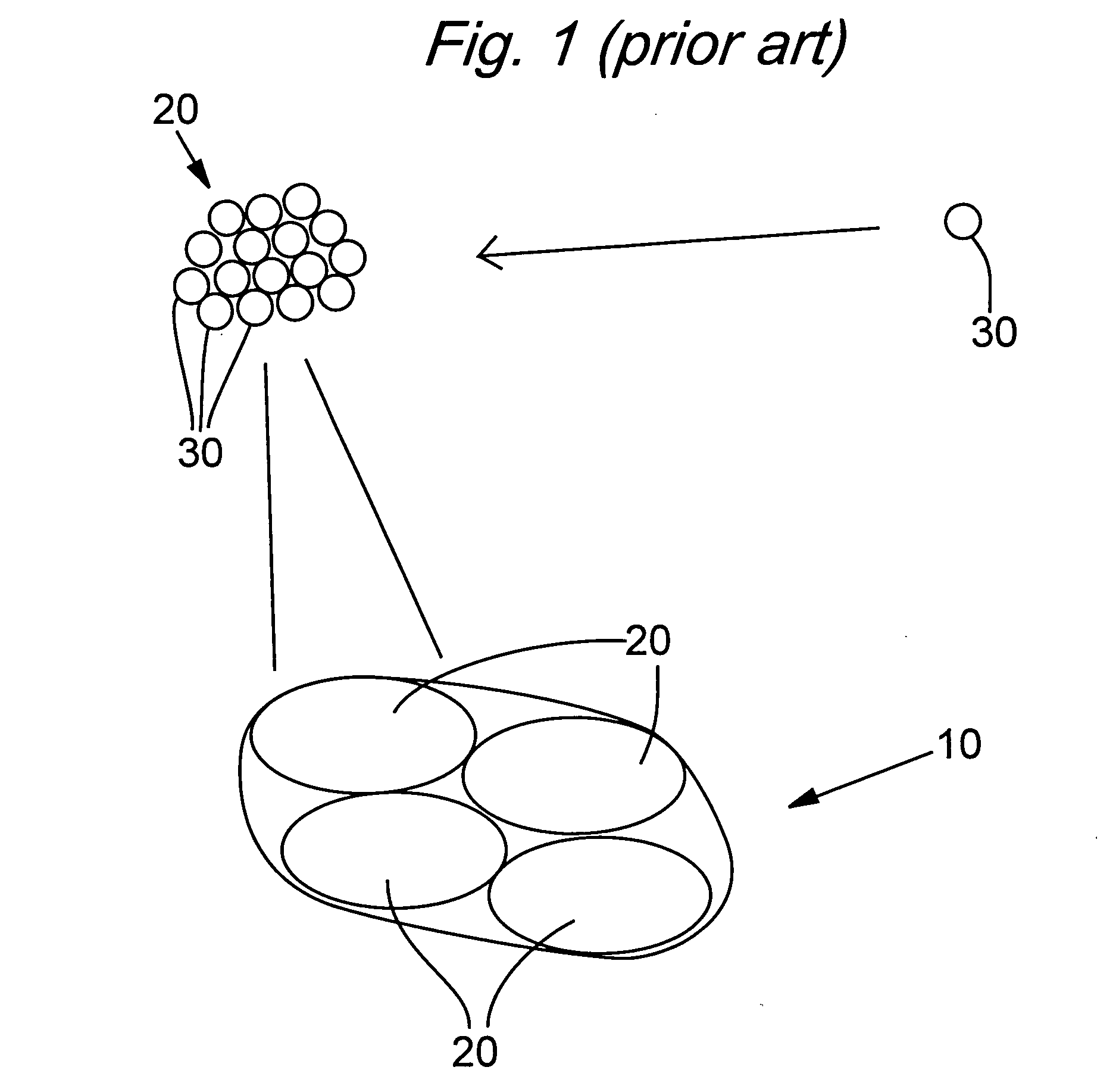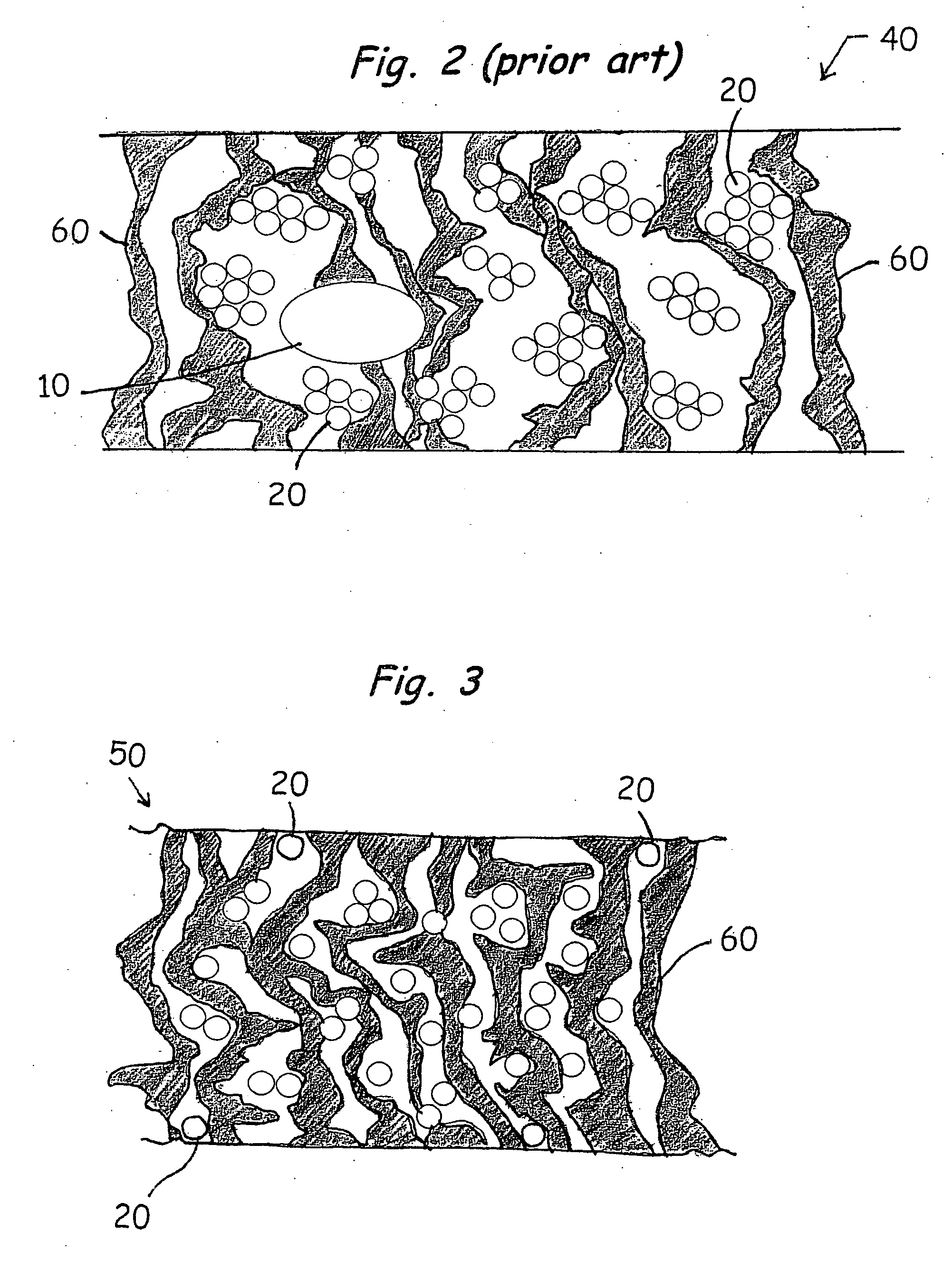Lead acid battery separator with improved electrical and mechanical properties
a lead acid battery and separator technology, applied in the direction of cell components, final product manufacturing, sustainable manufacturing/processing, etc., can solve the problems of low puncture resistance, low puncture resistance of agm separators, and low oxygen transport rate or recombination process control, etc., to improve electrical resistance, oxidation resistance, and puncture strength.
- Summary
- Abstract
- Description
- Claims
- Application Information
AI Technical Summary
Benefits of technology
Problems solved by technology
Method used
Image
Examples
example 1
[0032] UHMWPE (GUR 4150; Ticona LLC) was combined with precipitated silica (WB-37™; PPG Industries, Inc.), process oil, antioxidant, and lubricant in a batch mixer to form a mixture that was subsequently fed to a counter-rotating twin screw extruder operating at a melt temperature of approximately 215° C. Additional process oil was added in-line to bring the final oil content to between about 60 weight percent and about 65 weight percent. The resultant melt was passed through a sheet die into a calender, in which the calendar gap was used to control the extrudate thickness. The oil-filled sheet was subsequently extracted with trichloroethylene and dried to form the final separator. The resultant separator material had a silica-to-polyethylene weight ratio of about 2.5:1.
[0033] For comparison purposes, a prior art separator was made according to the above-mentioned process, except that the precipitated silica was a rotary-dried precipitated silica (Silica Battery Grade (SBG™); PPG I...
example 2
[0042] A 5 weight percent antioxidant coating solution was formed by dissolving Irganox 1010 (Ciba Specialty Chemicals Corp.; 25 grams) in trichloroethylene (500 ml) in a large glass beaker. The mixture was stirred at room temperature, and a clear solution was formed. Next, an applicator having a soft foam roller was dipped into the antioxidant coating solution and lightly pressed against one side of a 150 mm×300 mm sheet of battery separator (RhinoHide™ HTT; ENTEK International LLC), and a continuous motion was used to apply a coating that penetrated the pores of the battery separator. The trichlorethylene solvent was allowed to evaporate off of the separator in a fume hood, the sheet was turned over, and the antioxidant coating solution was applied to the opposite side of the separator using the above-described procedure.
[0043] The antioxidant-coated separator was then cut in the cross-machine direction into 25 mm wide×125 mm long strips, and its oxidation resistance was measured...
example 3
[0044] The process and procedures described in Example 2 were used to coat a 150 mm×300 mm sheet of the battery separator of the present invention described in Example 1. The antioxidant-coated separator was then cut in the cross-machine direction into 25 mm wide×125 mm long strips, and its oxidation resistance was measured as described above. A comparison of the antioxidant-coated separator and an uncoated separator showed an uncoated separator elongation loss of 16.8% and a coated separator elongation loss of only 4.8%.
PUM
| Property | Measurement | Unit |
|---|---|---|
| diameters | aaaaa | aaaaa |
| diameter | aaaaa | aaaaa |
| diameter | aaaaa | aaaaa |
Abstract
Description
Claims
Application Information
 Login to View More
Login to View More - R&D
- Intellectual Property
- Life Sciences
- Materials
- Tech Scout
- Unparalleled Data Quality
- Higher Quality Content
- 60% Fewer Hallucinations
Browse by: Latest US Patents, China's latest patents, Technical Efficacy Thesaurus, Application Domain, Technology Topic, Popular Technical Reports.
© 2025 PatSnap. All rights reserved.Legal|Privacy policy|Modern Slavery Act Transparency Statement|Sitemap|About US| Contact US: help@patsnap.com



